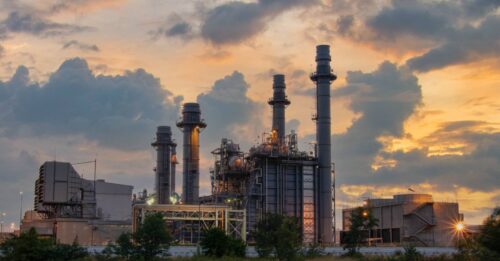
You Might Be Paying for a Worthless Gas Plant
As mortgage rates rise across the United States, imagine this: someone offers to sell you a brand-new home with a preapproved 30-year mortgage. Here’s the catch: the local government says the home will be demolished in 20 years to make way for a new railway line. Would you put money down and live there for 20 years, knowing you’d then have 10 more years of mortgage payments to make on something you can’t use and can’t sell?
Probably not. But many electricity customers in the United States may soon be in a similar situation. Utilities are building gas-fired power plants today for a future that may not have a use for them, potentially leaving ratepayers paying for a plant long after it has closed. In essence, ordinary residents will still be making mortgage payments on their old house, years after it has been demolished.
The 483 GW of gas-fired generation across the United States accounts for 43 percent of the country’s electric generation capacity. On top of that, 88 GW of new gas plants are proposed to come on line by 2030; for perspective, all the solar installed in the United States today amounts to 121 GW. Tennessee Valley Authority, America’s largest federal utility, is set to spend $3.5 billion to replace coal plants with 5 GW of gas-fired capacity, including 149 miles of gas pipelines.
Among utilities, investor-owned utilities are building many of these gas plants. But their investors and customers could soon face a big problem: to adhere to their own net-zero commitments, utilities may need to shut down their gas plants years before they originally planned to. For example, Duke Energy, the country’s second-largest utility by market capitalization, is building 2.3 GW of gas plants in Indiana alone, despite setting its own 2050 net-zero goal.
Useful Lives and Worthless Assets
Most (59 GW) of the 88 GW of new gas plants planned for operation by 2030 will be combined-cycle gas turbines (CCGT). CCGTs have a useful life of 25–30 years, so a CCGT that begins burning gas in 2025 would have a planned retirement date somewhere around 2050–2055. However, the need to cut emissions to meet a company’s emissions reduction targets, not to mention the falling costs of clean energy, may make that plant useless well before its retirement date.
To meet 1.5°C targets in-line with the Paris Agreement, we must cut economy-wide emissions 50 percent by 2030 and 100 percent by 2050. The Biden White House is targeting a “carbon pollution-free” US power sector by 2035. So, when push comes to shove and 2035 rolls around, what will a utility that owns a CCGT do?
There are three main options to keep a CCGT alive in a net-zero world: (1) burn clean hydrogen (produced using renewables), (2) use renewable natural gas, or (3) net out remaining emissions from unabated gas power plants using atmospheric carbon dioxide removal (CDR). However, each of these three options is currently limited by cost-effectiveness, technical maturity, or both. The solutions may become more viable in the future, but to protect customers today, the cost and feasibility of future retrofits or CDR investments must also be prudently accounted for in new gas plants today.
Just as a mortgage spreads out the cost of a home over decades of payments, the costs of building a new power plant are repaid by electricity customers over its long lifetime. So if a utility shuts down its gas plants to meet its climate goals, ratepayers will be left paying the bill for a project that is no longer producing power and that was built under poor assumptions that made its power appear artificially cheap.
The reason we pay for long-lived assets over a long time is that they’re expensive. Shortening the assumed life of a gas power plant will increase the monthly cost, but at least ratepayers won’t be stuck paying for a power plant that doesn’t produce power.
Evaluating the True Costs of Fossil Power
Just as a bank is unlikely to approve a 30-year mortgage on a 20-year home, regulators and ratepayers should demand utilities match the bill impacts of CCGTs to their expected useful life — based not only on the durability of the equipment but on the changing needs of society and the grid. Furthermore, the costs to convert a plant to a different fuel should be considered when approving new plants that require such changes to meet climate goals. Utilities and their regulators must take emissions pathways into account, using tools like RMI’s Utility Transition Hub, to assess if we have the carbon budget for the project — and if so, for how long.
If we’re committed to building an asset with a known useful life, it’s essential the payment schedule matches that end date. If there’s a mismatch, customers will face higher costs than necessary. There are cost-effective alternatives to gas plants: at least 70 GW of the 88 GW of proposed gas plants could be avoided economically with clean energy portfolios.
The good news is we are moving in the right direction — perhaps too slowly, but in the right direction nonetheless. Over 50 percent of gas plants proposed to enter service in the past two years were terminated before construction. Regulators in New Mexico recently denied permits for a gas plant already under construction, on the grounds that it would violate the state’s net-zero goal.
You wouldn’t pay for a house you can’t use. Why would you pay for a gas plant that won’t run?